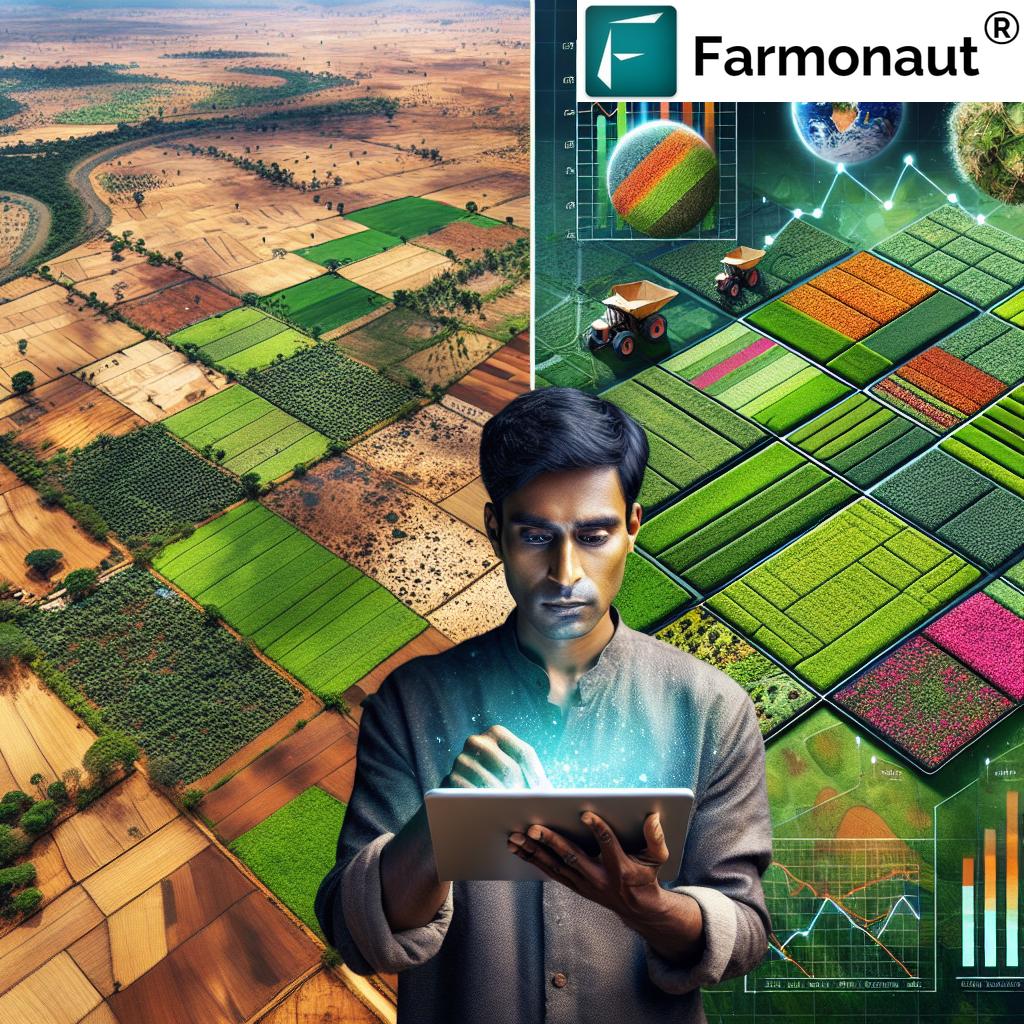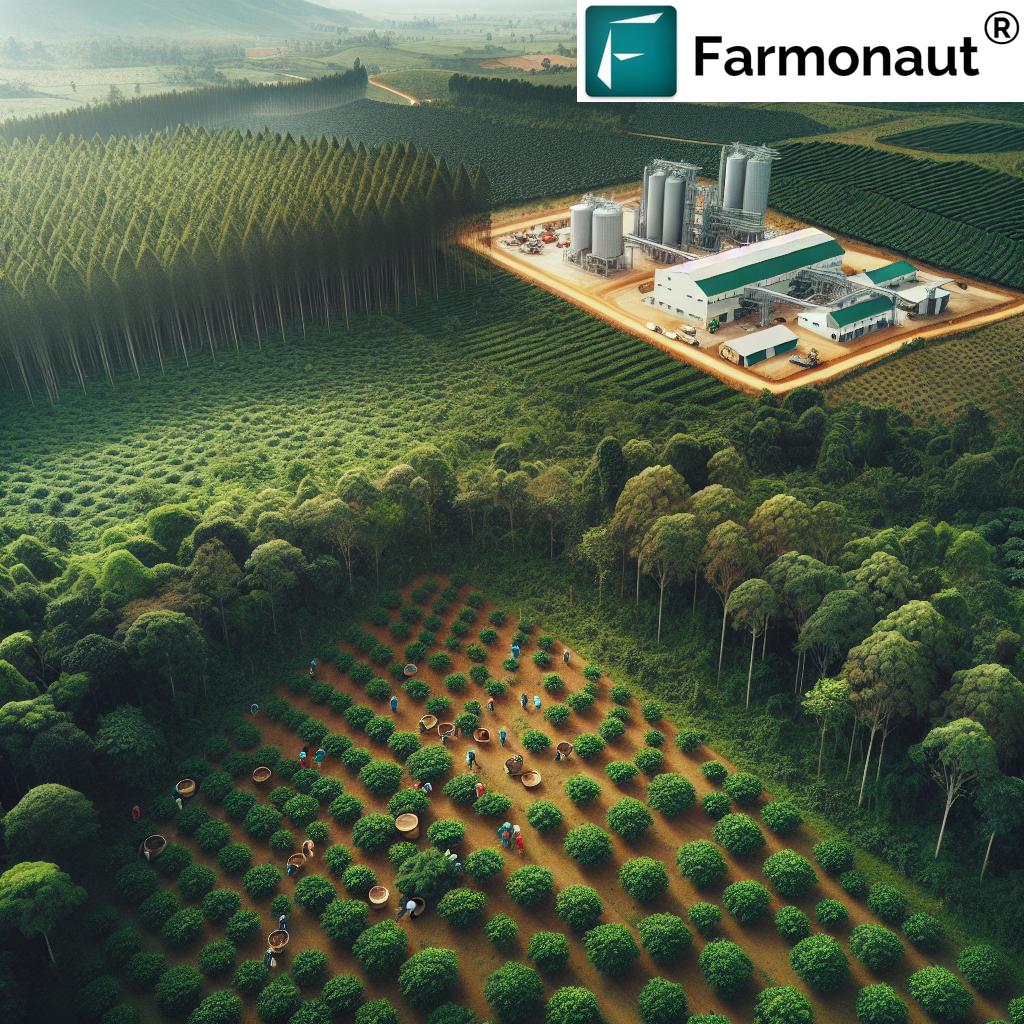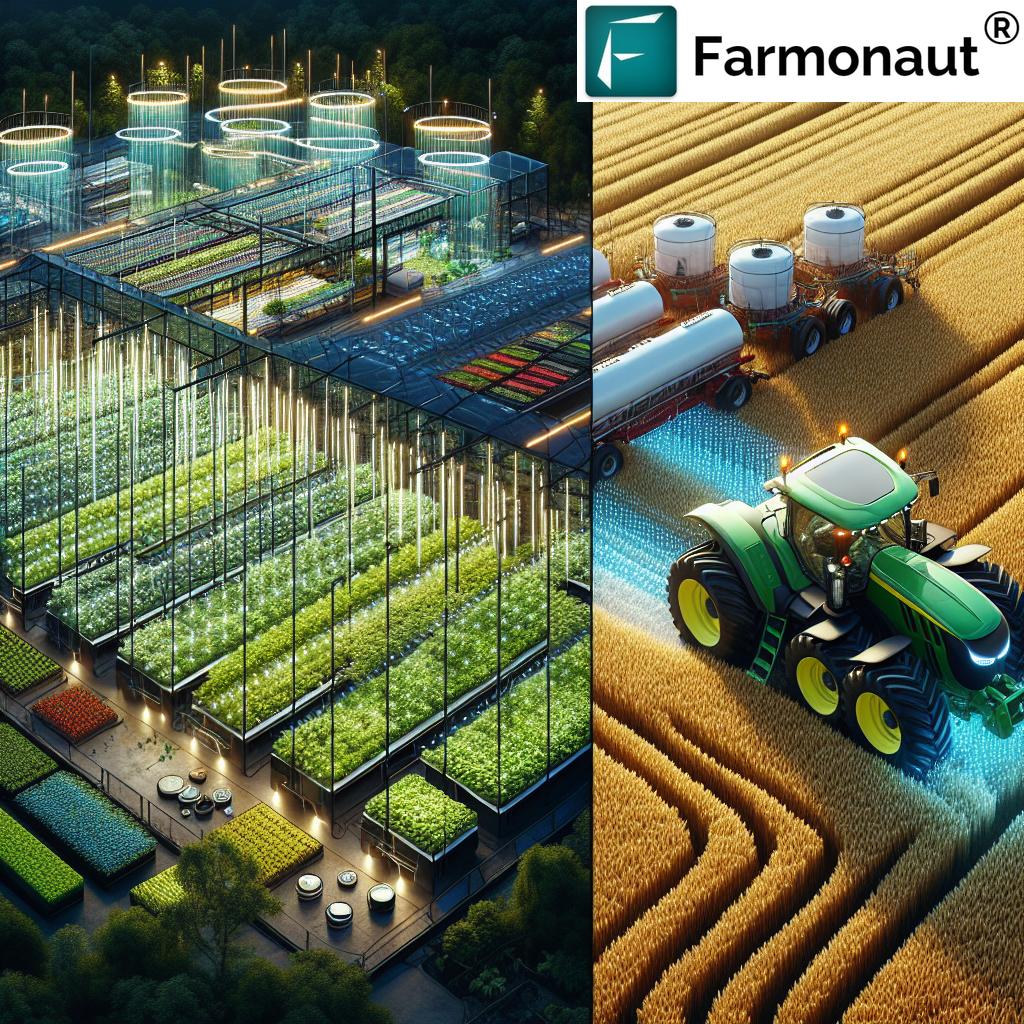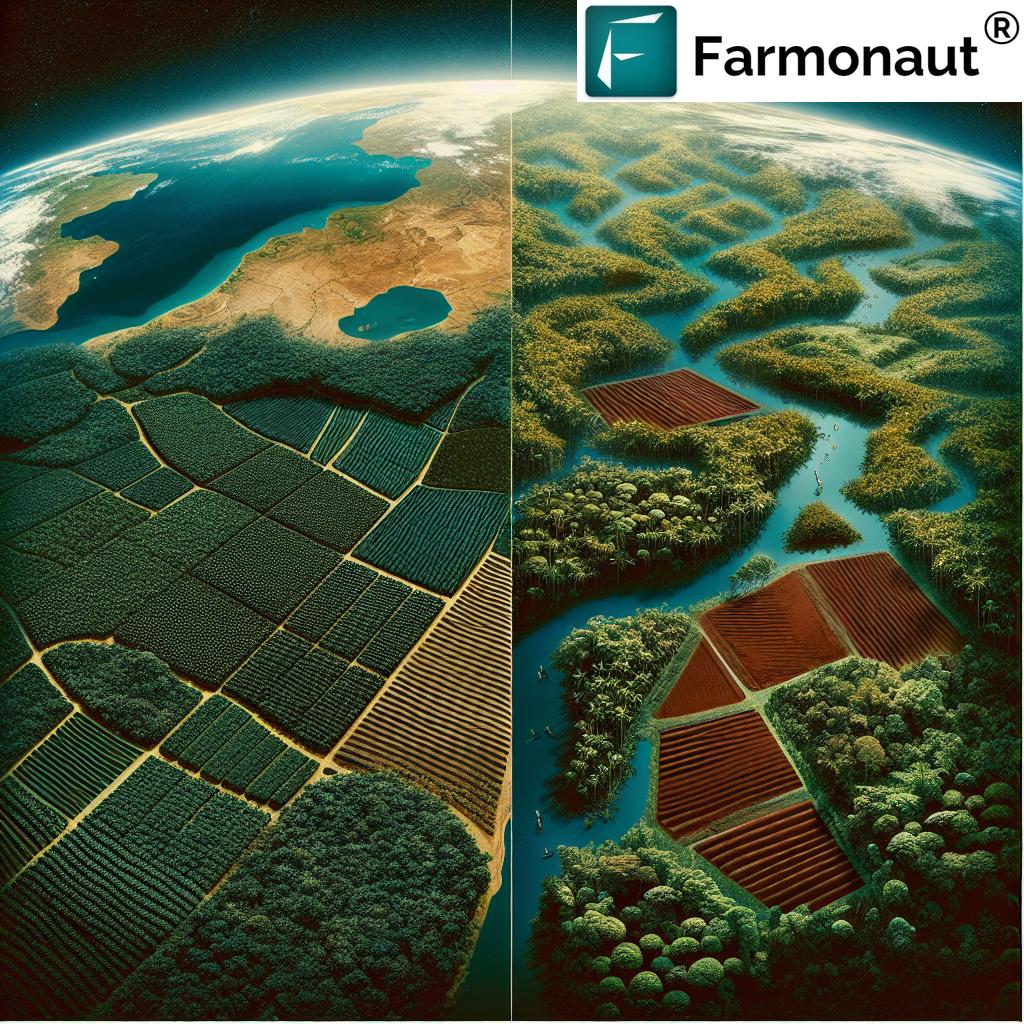Climate-Smart Agriculture: Zimbabwe’s Innovative Farming Solutions for Food Security in the Face of Drought

“Zimbabwe’s shift to climate-smart agriculture has led to a 30% increase in drought-resistant crop adoption over the past 5 years.”
In the face of escalating climate challenges, Zimbabwe is at the forefront of a remarkable agricultural transformation. We’re witnessing a pivotal shift from traditional farming methods to innovative, climate-smart agriculture techniques that are reshaping the country’s approach to food security. This blog post delves into the heart of Zimbabwe’s agricultural revolution, exploring how farmers are adapting to severe drought conditions and embracing sustainable practices to ensure a resilient food future.
The Climate Crisis and Zimbabwe’s Agricultural Landscape
Zimbabwe, like many nations in southeastern Africa, is grappling with the severe impacts of climate change. Persistent droughts have become a stark reality, pushing nearly half of the population—an astounding 7.7 million people—to the brink of food insecurity. The country’s agricultural sector, traditionally dominated by corn (maize) farming, has been hit hard by these changing weather patterns.
Corn, introduced by Portuguese traders in the 17th century, has long been Zimbabwe’s staple crop. However, its vulnerability to drought has become increasingly apparent in recent years. As rainfall patterns become more erratic and temperatures rise, farmers are facing unprecedented challenges in maintaining their yields and livelihoods.
The Rise of Climate-Smart Agriculture
In response to these challenges, Zimbabwe is embracing climate-smart agriculture—a set of farming practices designed to increase productivity while adapting to and mitigating the effects of climate change. This approach is not just about surviving; it’s about thriving in the face of adversity.
- Drought-Resistant Crops: Farmers are shifting from traditional corn to more resilient alternatives like chilies and millets.
- Water Management Techniques: Innovative irrigation systems and water conservation methods are being implemented.
- Sustainable Farming Practices: Soil conservation, crop rotation, and organic farming are gaining traction.
- Technology Integration: Satellite-based crop monitoring and AI-driven advisory systems are being adopted.
These strategies are not just theoretical—they’re being put into practice with remarkable results. For instance, in Chipinge district, farmers are experiencing firsthand the benefits of this agricultural revolution.
Case Study: Gertrude Siduna’s Chili Farm Success
Gertrude Siduna, a 49-year-old farmer from Chipinge, embodies the spirit of this agricultural transformation. After years of struggling with diminishing corn yields due to drought, Siduna made a bold decision to switch to chili farming. This move came after participating in climate-smart agriculture training funded by the U.S. Agency for International Development (USAID).
The results were astounding. In her first season of chili farming, Siduna earned approximately $400—a significant improvement over her previous corn harvests. This success story isn’t just about increased earnings; it’s about resilience, adaptation, and hope in the face of climate adversity.
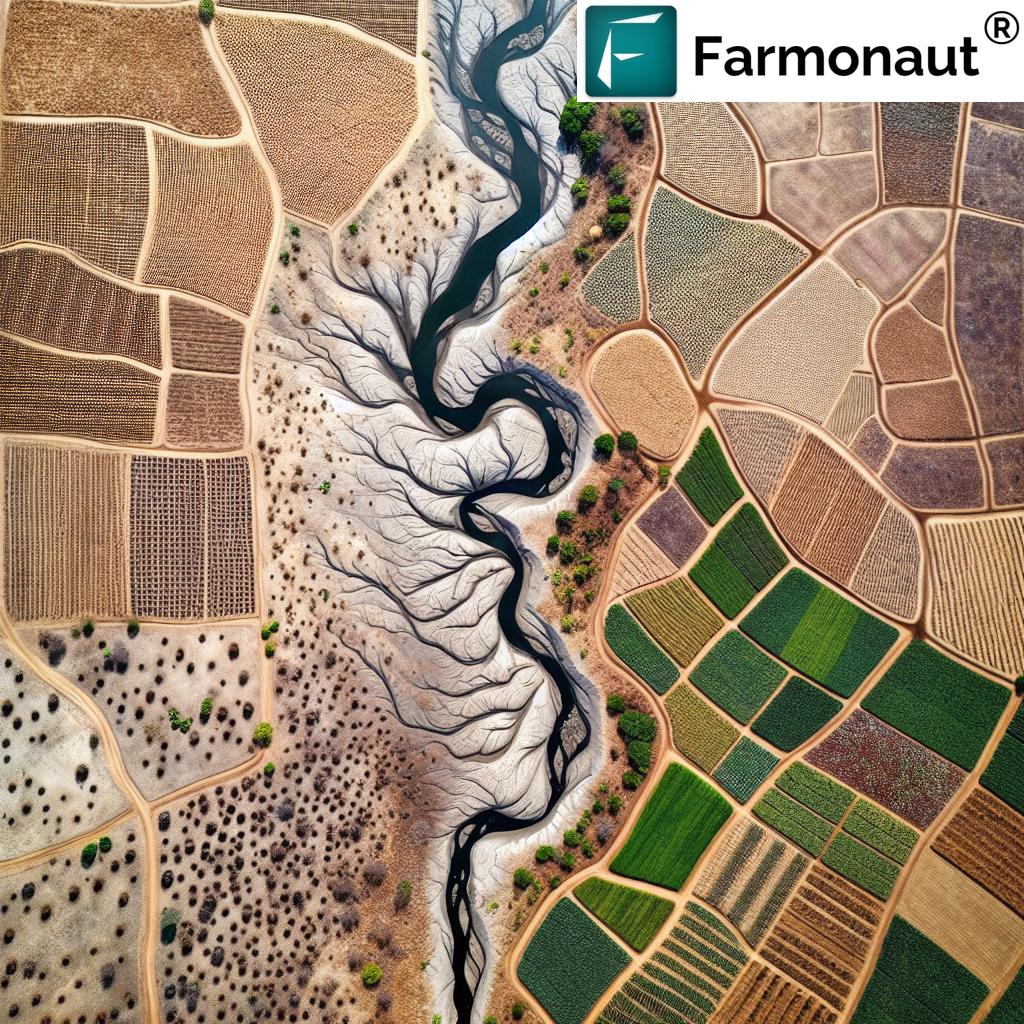
The Global Context: Climate Responsibility and International Support
Zimbabwe’s agricultural challenges highlight a broader global issue—climate responsibility. As a major contributor to greenhouse gas emissions, wealthier nations like the United States are recognizing their moral obligation to support countries bearing the brunt of climate change impacts.
USAID’s climate strategy report outlines an ambitious plan to mobilize $150 billion for climate-related initiatives globally. This commitment underscores the importance of international cooperation in addressing climate change and its effects on vulnerable agricultural communities.
Innovative Water Management: Solar-Powered Community Gardens
“Solar-powered community gardens in Zimbabwe have improved food security for over 10,000 families in arid regions since 2018.”
One of the most promising developments in Zimbabwe’s climate-smart agriculture movement is the establishment of solar-powered community gardens. These innovative projects, particularly in Chipinge, are transforming how farmers access and utilize water resources.
- Efficient Water Use: Solar-powered pumps draw water from nearby rivers, reducing reliance on rainfall.
- Community Empowerment: Groups of farmers collaboratively manage these gardens, sharing resources and knowledge.
- Crop Diversification: These gardens enable the cultivation of a variety of vegetables, enhancing dietary diversity and food security.
- Economic Benefits: Farmers can increase their income by selling surplus produce, reducing dependency on external aid.
These community gardens are more than just agricultural projects—they’re beacons of hope, demonstrating how innovative farming methods can create sustainable food systems in even the most challenging environments.
The Role of Technology in Climate-Smart Agriculture
As we delve deeper into climate-smart agriculture, it’s crucial to highlight the role of technology in driving this transformation. Advanced tools and platforms are making precision agriculture more accessible and effective for Zimbabwean farmers.
Farmonaut, a pioneering agricultural technology company, is at the forefront of this technological revolution. Through its satellite-based farm management solutions, Farmonaut is empowering farmers with real-time insights and data-driven decision-making tools.
- Satellite-Based Crop Health Monitoring: Farmonaut’s platform uses multispectral satellite images to monitor crop health, providing farmers with crucial information on vegetation health (NDVI) and soil moisture levels.
- AI-Driven Advisory Systems: The Jeevn AI system offers personalized farm advice, weather forecasts, and crop management strategies, tailored to each farmer’s specific needs.
- Resource Management Tools: Farmonaut’s solutions help optimize water usage, fertilizer application, and pest management, leading to more efficient and sustainable farming practices.
For farmers interested in leveraging these cutting-edge technologies, Farmonaut offers easy access through various platforms:
For developers and businesses looking to integrate Farmonaut’s technology into their own systems, the company offers API access. You can explore the Farmonaut API and refer to the comprehensive API Developer Documentation for seamless integration.
Comparing Traditional and Climate-Smart Agriculture in Zimbabwe
To better understand the transformative impact of climate-smart agriculture in Zimbabwe, let’s compare it with traditional farming methods:
| Aspect | Traditional Agriculture | Climate-Smart Agriculture |
|---|---|---|
| Main Crops | Corn (Maize) | Chilies, Millets, Diverse Vegetables |
| Water Management Techniques | Rainfed agriculture | Solar-powered irrigation, Water conservation methods |
| Farming Methods | Conventional tillage, Monoculture | Conservation agriculture, Crop rotation, Intercropping |
| Technology Adoption | Limited | High (Satellite monitoring, AI advisory systems) |
| Drought Resilience (Scale 1-10) | 3 | 8 |
| Estimated Yield Stability (%) | 40-60% | 70-90% |
| Food Security Impact | Low | High |
| Environmental Sustainability | Low | High |
| Farmer Income Stability | Low | Medium to High |
| Community Involvement | Individual-based farming | Community gardens, Knowledge sharing |
This comparison clearly illustrates the advantages of climate-smart agriculture in terms of resilience, sustainability, and food security. The shift towards these innovative practices is not just improving yields but also transforming the entire agricultural ecosystem in Zimbabwe.
The Debate on Food Aid and Sustainable Solutions
While climate-smart agriculture is making significant strides, the debate around food aid and sustainable solutions continues. Experts are critiquing traditional food aid approaches that focus primarily on distributing surplus staple crops. They argue for a more nuanced strategy that addresses the root causes of hunger and promotes long-term food security.
- Enhancing Dietary Variety: Moving beyond staple crops to promote a diverse, nutritious diet.
- Promoting Nutrition: Focusing on the quality of food aid, not just quantity.
- Addressing Socio-Economic Issues: Tackling underlying causes of food insecurity, such as poverty and lack of access to resources.
- Sustainable Development: Implementing programs that empower local communities to become self-sufficient in food production.
This shift in thinking aligns with the principles of climate-smart agriculture, emphasizing long-term resilience over short-term relief.
The Role of Technology in Advancing Climate-Smart Agriculture
As we continue to explore innovative solutions for food security in Zimbabwe, it’s crucial to highlight the role of advanced technology in driving this agricultural revolution. Platforms like Farmonaut are at the forefront of this technological integration, offering tools that significantly enhance the effectiveness of climate-smart agriculture practices.
Farmonaut’s satellite technology is revolutionizing land use in agriculture, providing farmers with unprecedented insights into their fields. This technology enables:
- Precise Crop Monitoring: Real-time data on crop health and growth stages.
- Efficient Resource Management: Optimized use of water, fertilizers, and pesticides.
- Early Problem Detection: Identification of potential issues before they become severe.
- Data-Driven Decision Making: Empowering farmers with actionable insights for improved yields.
By leveraging these technologies, Zimbabwean farmers can make more informed decisions, leading to increased productivity and sustainability in their farming practices.
Challenges and Future Prospects
While the adoption of climate-smart agriculture in Zimbabwe shows promising results, several challenges remain:
- Access to Technology: Ensuring that small-scale farmers have access to advanced farming technologies.
- Education and Training: Providing comprehensive training on new farming techniques and technologies.
- Financial Support: Securing funding for the transition to climate-smart practices.
- Policy Implementation: Developing and enforcing policies that support sustainable agriculture.
Despite these challenges, the future of agriculture in Zimbabwe looks promising. With continued support from international organizations, technological advancements, and the determination of local farmers, the country is well-positioned to become a model for climate-resilient agriculture in Africa.
Global Implications and Lessons Learned
Zimbabwe’s journey towards climate-smart agriculture offers valuable lessons for other nations facing similar challenges:
- Adaptability is Key: The willingness to adopt new crops and techniques is crucial for agricultural resilience.
- Community-Centered Approaches Work: Initiatives like solar-powered community gardens demonstrate the power of collective action.
- Technology as an Enabler: Leveraging advanced technologies can significantly enhance agricultural productivity and sustainability.
- Holistic Approach to Food Security: Addressing food security requires a multi-faceted approach, including nutrition, sustainability, and economic factors.
These lessons can inform global strategies for combating food insecurity in the face of climate change, offering hope and practical solutions for vulnerable communities worldwide.
Embracing Technology for Sustainable Farming
As we’ve seen throughout this exploration of Zimbabwe’s agricultural transformation, technology plays a pivotal role in advancing climate-smart practices. Farmonaut’s advanced crop monitoring and yield prediction capabilities, as showcased in the video above, are prime examples of how cutting-edge technology can revolutionize farming practices.
These technological solutions offer:
- Precision Agriculture: Enabling farmers to make data-driven decisions for optimal resource use.
- Yield Prediction: Helping farmers and policymakers plan more effectively for food security.
- Risk Mitigation: Early identification of potential crop issues, allowing for timely interventions.
- Sustainability: Promoting practices that are environmentally friendly and economically viable.
By integrating these technologies, Zimbabwe is not just addressing current agricultural challenges but is also paving the way for a more resilient and sustainable farming future.
The Path Forward: Sustainable Agriculture for Food Security
As we conclude our exploration of Zimbabwe’s innovative farming solutions, it’s clear that the country is at a pivotal point in its agricultural journey. The shift towards climate-smart agriculture, supported by advanced technologies and community-driven initiatives, offers a beacon of hope in the face of climate challenges.
Key takeaways from Zimbabwe’s experience include:
- Diversification is Crucial: Moving beyond traditional crops to drought-resistant varieties enhances resilience.
- Technology Integration: Leveraging tools like satellite monitoring and AI-driven advisory systems can significantly improve farming outcomes.
- Community Empowerment: Initiatives like solar-powered gardens showcase the power of collective action in addressing food security.
- Global Cooperation: International support and knowledge sharing are vital in combating the effects of climate change on agriculture.
As Zimbabwe continues to adapt and innovate, its experiences offer valuable lessons for other nations facing similar climate-related agricultural challenges. The country’s journey underscores the importance of embracing change, leveraging technology, and fostering community resilience in building a sustainable and food-secure future.
FAQ Section
- What is climate-smart agriculture?
Climate-smart agriculture is an approach that helps guide actions to transform agricultural systems to effectively support development and ensure food security in a changing climate. It aims to tackle three main objectives: sustainably increasing agricultural productivity and incomes, adapting and building resilience to climate change, and reducing greenhouse gas emissions where possible. - How is Zimbabwe adapting to climate change in agriculture?
Zimbabwe is adapting through various means, including adopting drought-resistant crops like chilies and millets, implementing innovative water management techniques such as solar-powered community gardens, and utilizing advanced technologies for precision farming and crop monitoring. - What role does technology play in Zimbabwe’s agricultural transformation?
Technology plays a crucial role through satellite-based crop monitoring, AI-driven advisory systems, and precision agriculture tools. These technologies help farmers make informed decisions, optimize resource use, and improve crop yields. - How are community gardens contributing to food security in Zimbabwe?
Solar-powered community gardens are enhancing food security by providing efficient water management, enabling the cultivation of diverse crops, and fostering community collaboration. They also help reduce reliance on external food aid and improve local economic conditions. - What are the main challenges in implementing climate-smart agriculture in Zimbabwe?
Key challenges include access to technology for small-scale farmers, providing comprehensive education and training on new farming techniques, securing financial support for the transition to climate-smart practices, and developing and enforcing supportive policies.
Conclusion
Zimbabwe’s journey towards climate-smart agriculture is a testament to human resilience and innovation in the face of environmental challenges. By embracing new crops, innovative technologies, and sustainable farming practices, the country is not only addressing its immediate food security concerns but also paving the way for a more resilient agricultural future.
As global climate patterns continue to shift, the lessons learned from Zimbabwe’s experience will be invaluable for other nations facing similar challenges. The integration of advanced technologies, community-driven initiatives, and international cooperation offers a blueprint for sustainable agriculture in the 21st century.
For those interested in learning more about how technology can support climate-smart agriculture, explore Farmonaut’s comprehensive suite of tools and services:
By leveraging these innovative solutions, farmers and agricultural stakeholders can take significant steps towards building a more sustainable and food-secure future, not just in Zimbabwe, but across the globe.





